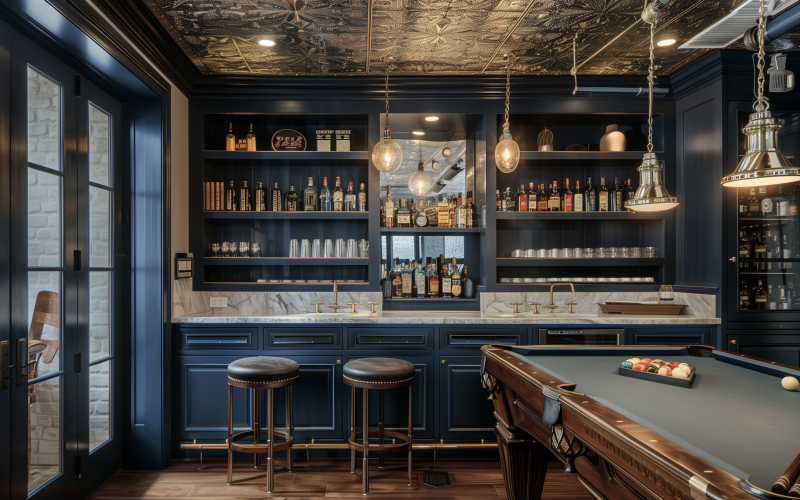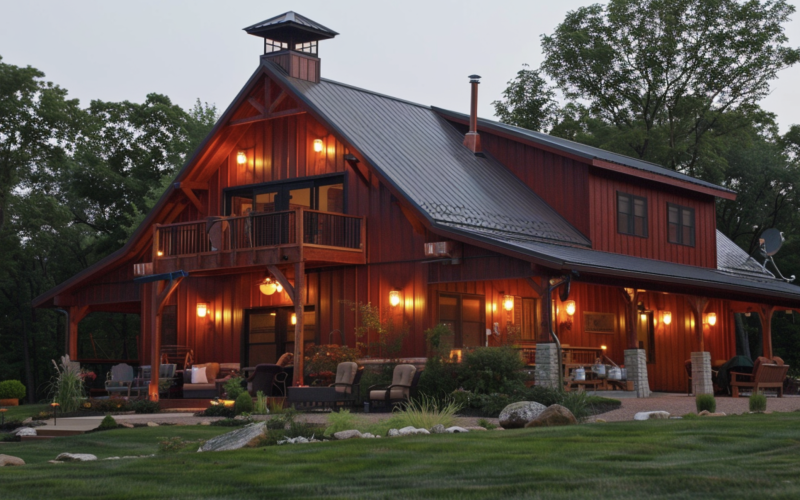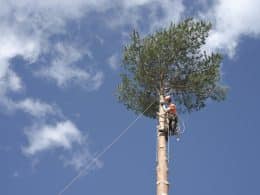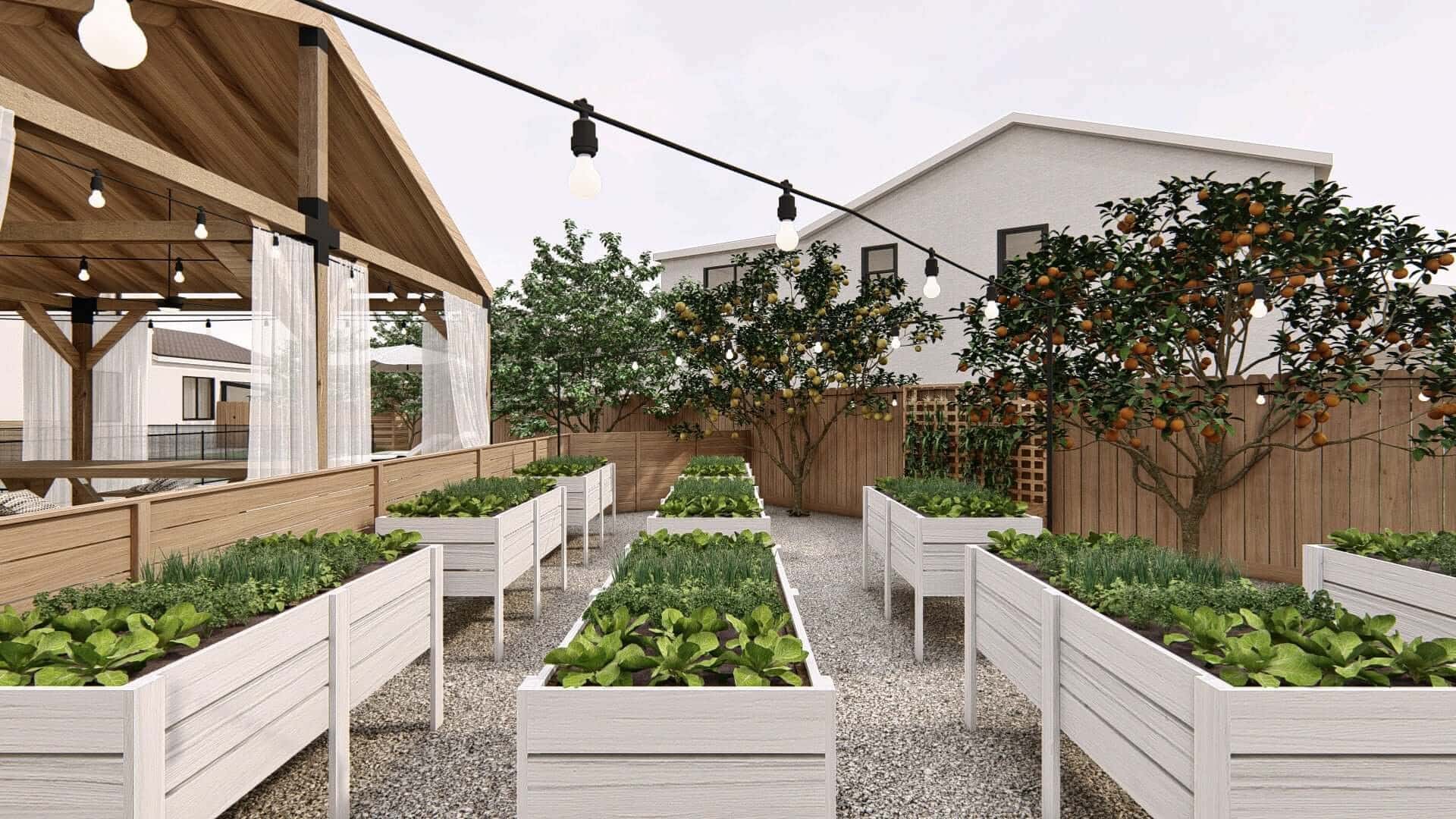Creating a beautiful backyard layout can feel overwhelming, but it doesn’t have to be.
Many homeowners struggle with turning their outdoor space into a functional and attractive area that suits their needs.
The good news is that with careful planning and creativity, you can design a backyard you’ll love, even when considering low-budget backyard designs with gravel.
In this guide, we’ll walk you through the essential steps to create your ideal backyard layout, from defining your space’s purpose to selecting the right plants and features.
Get ready to transform your outdoor area into a personal oasis with our step-by-step approach.
Key Steps to Design a Backyard Layout
Step 1: Define the Purpose and Use of Your Backyard
The first step in creating your perfect backyard is to imagine how you want to use the space.
You’ll create a space that enhances your daily life by clearly defining your goals.
Once you have a clear vision, it’s time to list all the features you’d like in your backyard.
Don’t hold back at this stage – write down everything that comes to mind.
Your list might include a vegetable garden, a cozy seating area with a fire pit, a water feature, or even an outdoor kitchen.
This wishlist will guide your design process and help you prioritize elements as you move forward.
Step 2: Analyze Your Space
Take a close look at your current backyard. What elements are already in place? Which ones do you want to keep, and which should be removed?
Consider existing trees, slopes, sunny and shady areas, and soil conditions.
Measure the entire yard and note the dimensions of existing features like patios, trees, or structures.
This information will help you understand how much space you have for new elements and ensure that your design ideas fit realistically within your yard’s boundaries.
Step 3: Develop a Concept Plan
Using your measurements and wishlist, create a basic sketch of your backyard. It doesn’t need to be a work of art—a simple hand-drawn plan will do.
Place your desired elements on the sketch, considering factors like sun exposure, privacy, and how different areas will connect.
This rough layout will serve as the foundation for your final design.
To refine your backyard layout, use bubble diagrams to represent different zones.
Each bubble represents an area like the dining space, garden, or play zone.
This technique helps you visualize how different areas relate and flow together.
Detailed Steps and Considerations
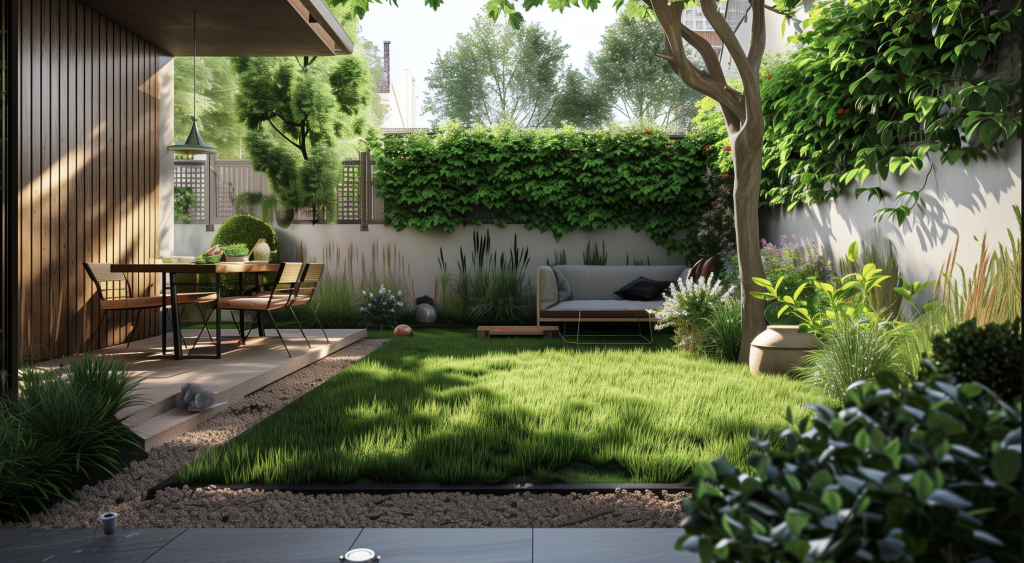
1. Choose and Place Key Features
Focal points draw the eye and add character to your backyard.
These could be structural elements like a pergola or a decorative element like a unique sculpture.
A water feature can provide a soothing ambiance, while a fire pit creates a cozy gathering spot.
Place these features strategically to create visual interest and define different areas of your yard.
2. Select Plants and Landscaping Elements
Choose plants that thrive in your local climate and align with your maintenance preferences.
Consider factors like sunlight, soil type, and water requirements.
Mix evergreen plants for year-round interest with seasonal bloomers for bursts of color.
Arrange your plants in layers, with taller plants at the back and shorter ones in front.
This creates depth and ensures all plants are visible.
Group plants with similar needs together to simplify care and create a cohesive look.
To add interest to your landscape, consider creating themed areas, like a butterfly garden or a section of native plants.
3. Finalize the Design and Implementation
Compile all your ideas and decisions into a detailed master plan.
This should include precise locations of all elements, from pathways and structures to plants and utilities.
A comprehensive plan will guide your implementation process and help you avoid costly mistakes.
Consider hiring professionals for complex tasks or if you’re unsure about any aspect of the implementation.
Landscape designers can refine your ideas and ensure your plan is feasible.
Contractors can handle challenging aspects like grading, irrigation installation, or building structures.
Additional Tips for a Successful Backyard Layout
Consider Future Maintenance
As you design, consider long-term care. Choose plants and materials that align with the amount of time you’re willing to spend on upkeep—plan for easy access to areas that need regular maintenance, like garden beds or water features.
Incorporate Sustainable Practices
Integrate eco-friendly elements into your design. This could include using native plants that require less water, installing a rainwater collection system, or choosing sustainable materials for hardscaping.
These practices benefit the environment and can also reduce long-term maintenance costs.
Budgeting
Monitor costs throughout the design process. Prioritize the elements that matter most to you and be prepared to adjust as needed.
Remember, if necessary, you can implement your design in phases, spreading the cost over time while achieving your ultimate backyard vision.
Conclusion
As you embark on your backyard design journey, remember that creating your ideal outdoor space is an exciting process combining creativity and practical planning.
By following these steps—from defining your vision to selecting plants and features—you’ll be well on your way to transforming your backyard into a personalized retreat.
Don’t be afraid to experiment with different layouts and ideas; remember that your design can evolve.
Whether aiming for a serene garden oasis or a lively entertainment area, your new backyard will reflect your unique style and needs.
Ready to start bringing your backyard dreams to life?
Begin by sketching your ideas or consulting with a local landscape professional for expert guidance. Your perfect outdoor space is just a few steps away!






